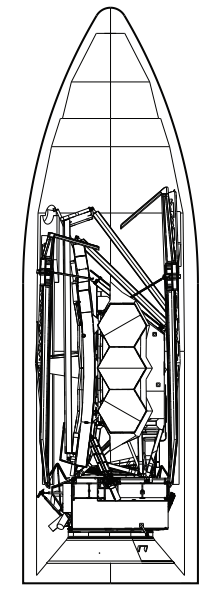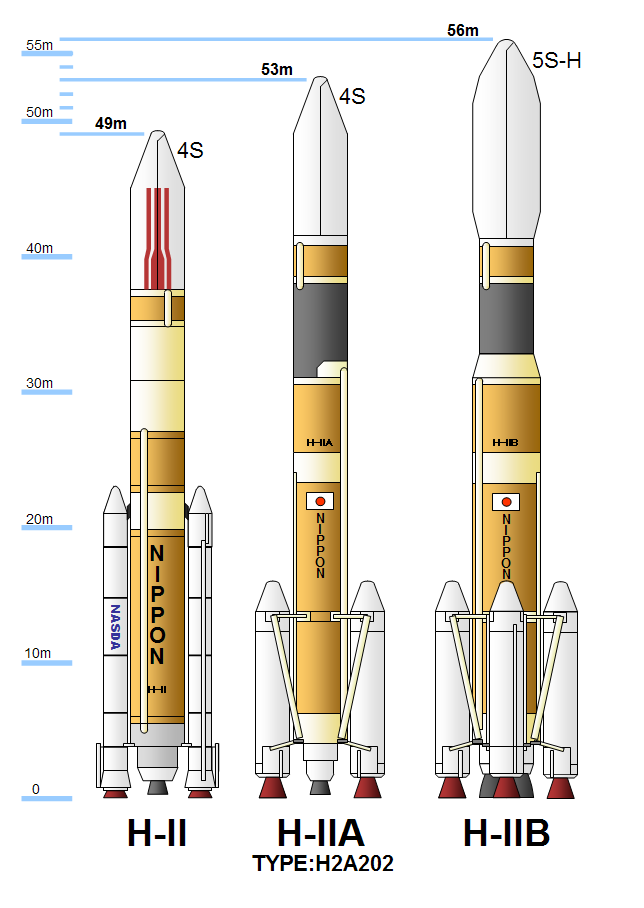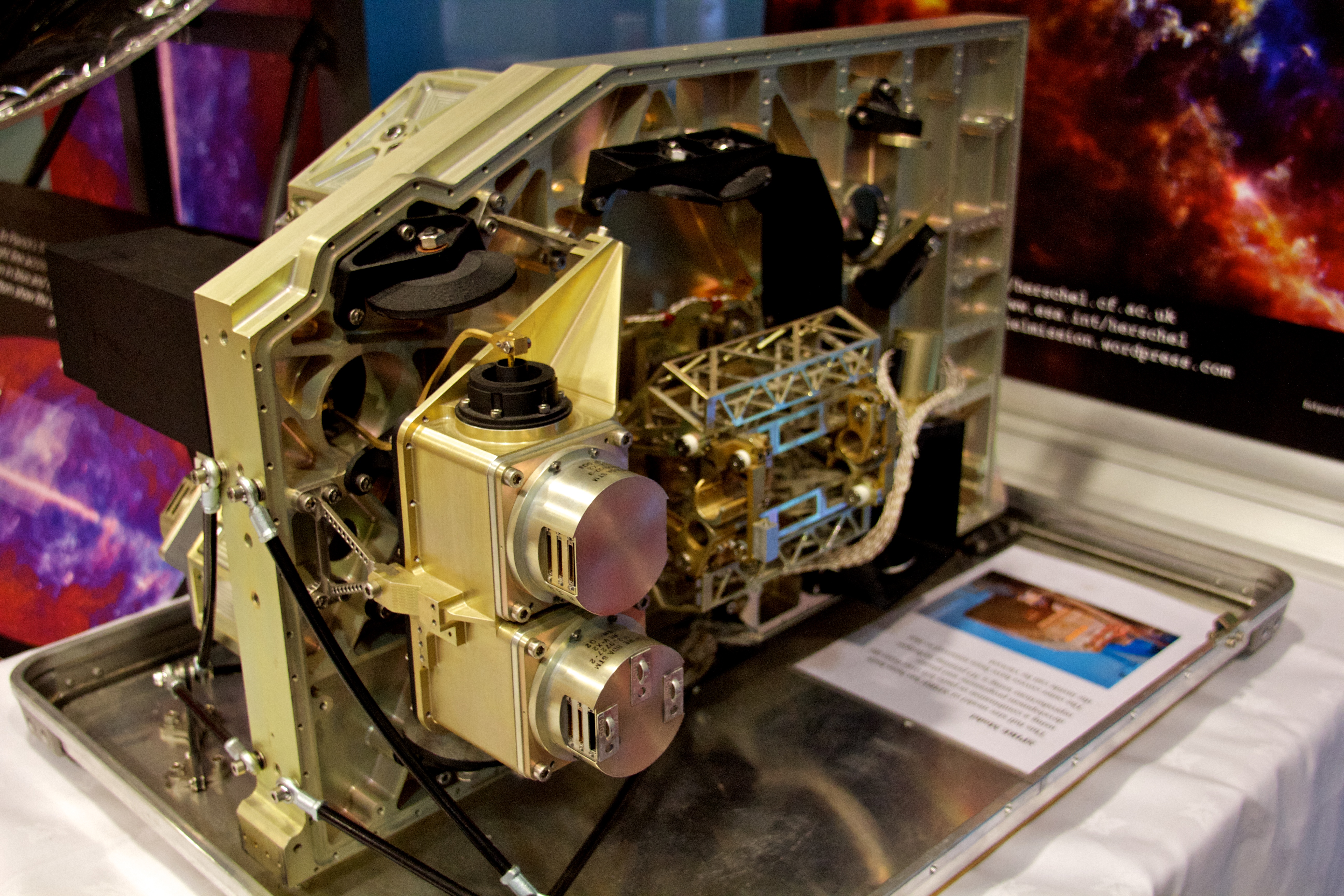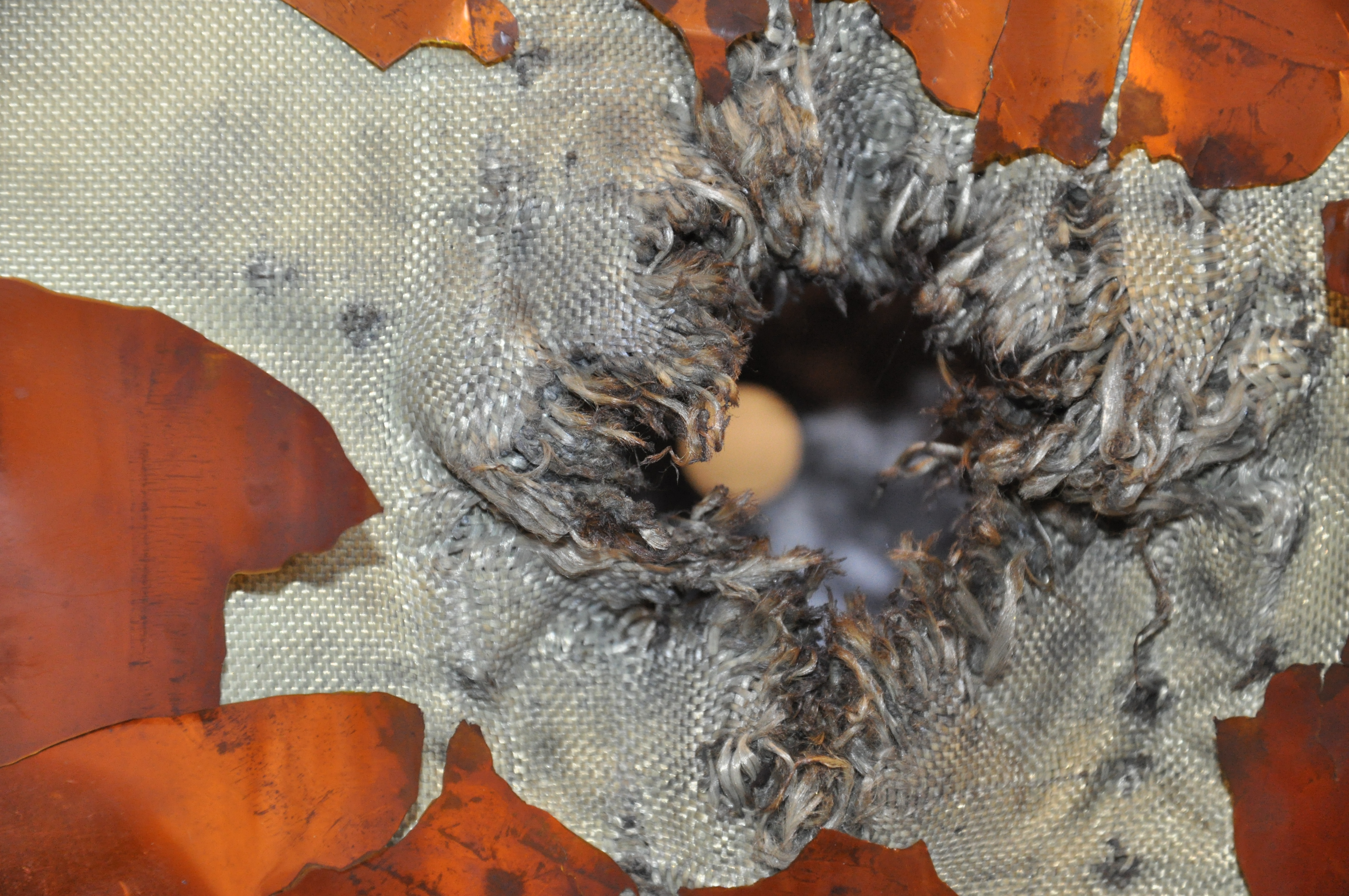|
Ariane 5
Ariane 5 is a retired European heavy-lift space launch vehicle developed and operated by Arianespace for the European Space Agency (ESA). It was launched from the Guiana Space Centre (CSG) in French Guiana. It was used to deliver payloads into geostationary transfer orbit (GTO), low Earth orbit (LEO) or further into space. The launch vehicle had a streak of 82 consecutive successful launches between 9 April 2003 and 12 December 2017. Since 2014, Ariane 6, a direct successor system, is in development. The system was designed as an expendable launch system by the ''Centre national d'études spatiales'' (CNES), the French government's space agency, in cooperation with various European partners. Despite not being a direct derivative of its predecessor launch vehicle program, it was classified as part of the Ariane rocket family. ArianeGroup was the prime contractor for the manufacturing of the vehicles, leading a multi-country consortium of other European contractors. Ariane 5 was ... [...More Info...] [...Related Items...] OR: [Wikipedia] [Google] [Baidu] |
Ariane Flight VA256
Ariane flight VA256 was an Ariane 5 rocket flight that launched the James Webb Space Telescope into space on 25 December 2021. It was 2021's final Ariane flight, its most valuable payload to date, and the Ariane mission. The launch was described by NASA as "flawless" and "perfect". Launch configuration Rocket Ariane 5 is a heavy lift two-stage rocket with two solid fuel boosters. It was used in its ''ECA'' variant, which offers the highest payload mass capacity. The total launch mass of the vehicle is of the order of . Payload The only payload on the flight was the James Webb Space Telescope (JWST), a NASA/ESA space-based observatory. The launch is one of the European Space Agency's contributions to the project. The telescope had a launch mass of about and a design lifetime of 5 to 10 years. Preparation campaign Arrival in Kourou The payload arrived in Kourou, French Guiana, on where it was unloaded from the MN ''Colibri'' cargo ship and transported to the space centr ... [...More Info...] [...Related Items...] OR: [Wikipedia] [Google] [Baidu] |
H-IIB
H-IIB (H2B) was an expendable space launch system jointly developed by the Japanese government's space agency JAXA and Mitsubishi Heavy Industries. It was used to launch the H-II Transfer Vehicle (HTV, or ''Kōnotori'') cargo spacecraft for the International Space Station. The H-IIB was a liquid-fueled rocket, with solid-fuel strap-on boosters and was launched from the Tanegashima Space Center in southern Japan. H-IIB made its first flight in 2009, and had made a total of nine flights through 2020 with no failures. H-IIB was able to carry a payload of up to to Geostationary transfer orbit (GTO), compared with the payload of 4000-6000 kg for the H-IIA, a predecessor design. Its performance to low Earth orbit (LEO) was sufficient for the H-II Transfer Vehicle (HTV). The first H-IIB was launched in September 2009 and the last H-IIB was launched in May 2020. Development The H-IIB was a space launch vehicle jointly designed, manufactured and operated by JAXA and Mitsub ... [...More Info...] [...Related Items...] OR: [Wikipedia] [Google] [Baidu] |
Ammonium Perchlorate
Ammonium perchlorate ("AP") is an inorganic compound with the formula NH4 ClO4. It is a colorless or white solid that is soluble in water. It is a powerful oxidizer. Combined with a fuel, it can be used as a rocket propellant called ammonium perchlorate composite propellant. Its instability has involved it in a number of accidents, such as the PEPCON disaster. Production Ammonium perchlorate (AP) is produced by reaction between ammonia and perchloric acid. This process is the main outlet for the industrial production of perchloric acid. The salt also can be produced by salt metathesis reaction of ammonium salts with sodium perchlorate. This process exploits the relatively low solubility of NH4ClO4, which is about 10% of that for sodium perchlorate.Helmut Vogt, Jan Balej, John E. Bennett, Peter Wintzer, Saeed Akbar Sheikh, Patrizio Gallone "Chlorine Oxides and Chlorine Oxygen Acids" in Ullmann's Encyclopedia of Industrial Chemistry 2002, Wiley-VCH. AP crystallises as colorle ... [...More Info...] [...Related Items...] OR: [Wikipedia] [Google] [Baidu] |
Galileo (satellite Navigation)
Galileo is a global navigation satellite system (GNSS) that went live in 2016, created by the European Union through the European Space Agency (ESA), operated by the European Union Agency for the Space Programme (EUSPA), headquartered in Prague, Czech Republic, with two ground operations centres in Fucino, Italy, and Oberpfaffenhofen, Germany. The €10 billion project is named after the Italian astronomer Galileo Galilei. One of the aims of Galileo is to provide an independent high-precision positioning system so European political and military authorities do not have to rely on the US GPS, or the Russian GLONASS systems, which could be disabled or degraded by their operators at any time. The use of basic (lower-precision) Galileo services is free and open to everyone. A fully encrypted higher-precision service is available for free to government-authorized users. Galileo is intended to provide horizontal and vertical position measurements within 1 m precision. Galileo is al ... [...More Info...] [...Related Items...] OR: [Wikipedia] [Google] [Baidu] |
Planck (spacecraft)
''Planck'' was a space observatory operated by the European Space Agency (ESA) from 2009 to 2013, which mapped the anisotropies of the cosmic microwave background (CMB) at microwave and infrared frequencies, with high sensitivity and small angular resolution. The mission substantially improved upon observations made by the NASA Wilkinson Microwave Anisotropy Probe (WMAP). ''Planck'' provided a major source of information relevant to several cosmological and astrophysical issues, such as testing theories of the early Universe and the origin of cosmic structure. Since the end of its mission, ''Planck'' has defined the most precise measurements of several key cosmological parameters, including the average density of ordinary matter and dark matter in the Universe and the age of the universe. The project was started around 1996 and was initially called COBRAS/SAMBA: the Cosmic Background Radiation Anisotropy Satellite/Satellite for Measurement of Background Anisotropies. It was l ... [...More Info...] [...Related Items...] OR: [Wikipedia] [Google] [Baidu] |
Herschel Space Observatory
The Herschel Space Observatory was a space observatory built and operated by the European Space Agency (ESA). It was active from 2009 to 2013, and was the largest infrared telescope ever launched until the launch of the James Webb Space Telescope in 2021. Herschel carries a mirror and instruments sensitive to the far infrared and submillimetre wavebands (55–672 µm). Herschel was the fourth and final cornerstone mission in the Horizon 2000 programme, following ''SOHO''/'' Cluster II'', ''XMM-Newton'' and ''Rosetta''. The observatory was carried into orbit by an Ariane 5 in May 2009, reaching the second Lagrangian point (L2) of the Earth–Sun system, from Earth, about two months later. Herschel is named after Sir William Herschel, the discoverer of the infrared spectrum and planet Uranus, and his sister and collaborator Caroline Herschel. The observatory was capable of seeing the coldest and dustiest objects in space; for example, cool cocoons where stars form and ... [...More Info...] [...Related Items...] OR: [Wikipedia] [Google] [Baidu] |
Automated Transfer Vehicle
The Automated Transfer Vehicle, originally Ariane Transfer Vehicle or ATV, was an expendable cargo spacecraft developed by the European Space Agency (ESA), used for space cargo transport in 2008–2015. The ATV design was launched to orbit five times, exclusively by the Ariane 5 heavy-lift launch vehicle. It effectively was a larger European counterpart to the Russian Progress cargo spacecraft for carrying upmass to a single destination—the International Space Station (ISS)—but with three times the capacity. The five ATVs were named after important European figures in science and engineering: '' Jules Verne'', '' Johannes Kepler'', ''Edoardo Amaldi'', ''Albert Einstein'', and ''Georges Lemaître''. Following several delays to the program, the first of these was launched in March 2008. These ATVs performed supply missions to the ISS, transporting various payloads such as propellant, water, air, food, and scientific research equipment; ATVs also reboosted the station into a ... [...More Info...] [...Related Items...] OR: [Wikipedia] [Google] [Baidu] |
Rosetta (spacecraft)
''Rosetta'' was a space probe built by the European Space Agency launched on 2 March 2004. Along with ''Philae (spacecraft), Philae'', its lander module, ''Rosetta'' performed a detailed study of comet 67P/Churyumov–Gerasimenko (67P). During its journey to the comet, the spacecraft performed planetary flyby, flybys of Earth, Mars, and the asteroids 21 Lutetia and 2867 Šteins. It was launched as the third cornerstone mission of the ESA's Horizon 2000 programme, after ''Solar and Heliospheric Observatory, SOHO'Cluster II (spacecraft), Cluster'' and ''XMM-Newton''. On 6 August 2014, the spacecraft reached the comet and performed a series of manoeuvers to eventually orbit the comet at distances of . On 12 November, its lander module ''Philae'' performed the first successful landing on a comet, though its battery power ran out two days later. Communications with ''Philae'' were briefly restored in June and July 2015, but due to diminishing solar power, ''Rosetta'' communications ... [...More Info...] [...Related Items...] OR: [Wikipedia] [Google] [Baidu] |
Envisat
Envisat ("Environmental Satellite") is a large inactive Earth-observing satellite which is still in orbit and now considered space debris. Operated by the European Space Agency (ESA), it was the world's largest civilian Earth observation satellite. It was launched on 1 March 2002 aboard an Ariane 5 from the Guyana Space Centre in Kourou, French Guiana, into a Sun synchronous polar orbit at an altitude of 790 ± 10 km. It orbits the Earth in about 101 minutes, with a repeat cycle of 35 days. After losing contact with the satellite on 8 April 2012, ESA formally announced the end of Envisat's mission on 9 May 2012. Envisat cost 2.3 billion Euro (including 300 million Euro for 5 years of operations) to develop and launch. The mission has been replaced by the Sentinel series of satellites. The first of these, Sentinel 1, has taken over the radar duties of Envisat since its launch in 2014. Mission Envisat was launched as an Earth observation satellite. Its objective ... [...More Info...] [...Related Items...] OR: [Wikipedia] [Google] [Baidu] |
XMM-Newton
''XMM-Newton'', also known as the High Throughput X-ray Spectroscopy Mission and the X-ray Multi-Mirror Mission, is an X-ray space observatory launched by the European Space Agency in December 1999 on an Ariane 5 rocket. It is the second cornerstone mission of ESA's Horizon 2000 programme. Named after physicist and astronomer Sir Isaac Newton, the spacecraft is tasked with investigating interstellar X-ray sources, performing narrow- and broad-range spectroscopy, and performing the first simultaneous imaging of objects in both X-ray and optical (visible and ultraviolet) wavelengths. Initially funded for two years, with a ten-year design life, the spacecraft remains in good health and has received repeated mission extensions, most recently in October 2020 and is scheduled to operate until the end of 2022. ESA plans to succeed ''XMM-Newton'' with the Advanced Telescope for High Energy Astrophysics (ATHENA), the second large mission in the Cosmic Vision 2015–2025 plan, to be launche ... [...More Info...] [...Related Items...] OR: [Wikipedia] [Google] [Baidu] |
ELA-3
ELA-3 (french: Ensemble de Lancement Ariane 3, lit=Ariane Launch Complex 3), is a launch pad and associated facilities at the Centre Spatial Guyanais in French Guiana. ELA-3 is operated by Arianespace as part of the expendable launch system for Ariane 5 launch vehicles A launch vehicle or carrier rocket is a rocket designed to carry a payload (spacecraft or satellites) from the Earth's surface to outer space. Most launch vehicles operate from a launch pads, supported by a launch control center and syste .... , 114 launches have been carried out from it, the first of which occurred on 4 June 1996. ELA-3 is 21 square kilometres in size. Launch history Scheduled flights References {{Ariane Guiana Space Centre ... [...More Info...] [...Related Items...] OR: [Wikipedia] [Google] [Baidu] |
Guiana Space Centre
The Guiana Space Centre (french: links=no, Centre spatial guyanais; CSG), also called Europe's Spaceport, is a European spaceport to the northwest of Kourou in French Guiana, a region of France in South America. Kourou is located approximately north of the equator, at a latitude of 5°. In operation since 1968, it is suitable as a location for a spaceport, because of its equatorial location and open sea to the east. The European Space Agency (ESA), the European Union Agency for the Space Programme (EUSPA), the French space agency CNES (National Centre for Space Studies), the Space Agency of the Republic of Azerbaijan (Azercosmos) and the commercial company Arianespace conduct launches from Kourou. It was used by the ESA to send supplies to the International Space Station using the Automated Transfer Vehicle. History In 1964 Guiana was selected to become the spaceport of France, replacing France's first launch site Centre interarmées d'essais d'engins spéciaux in Hammag ... [...More Info...] [...Related Items...] OR: [Wikipedia] [Google] [Baidu] |







.png)

